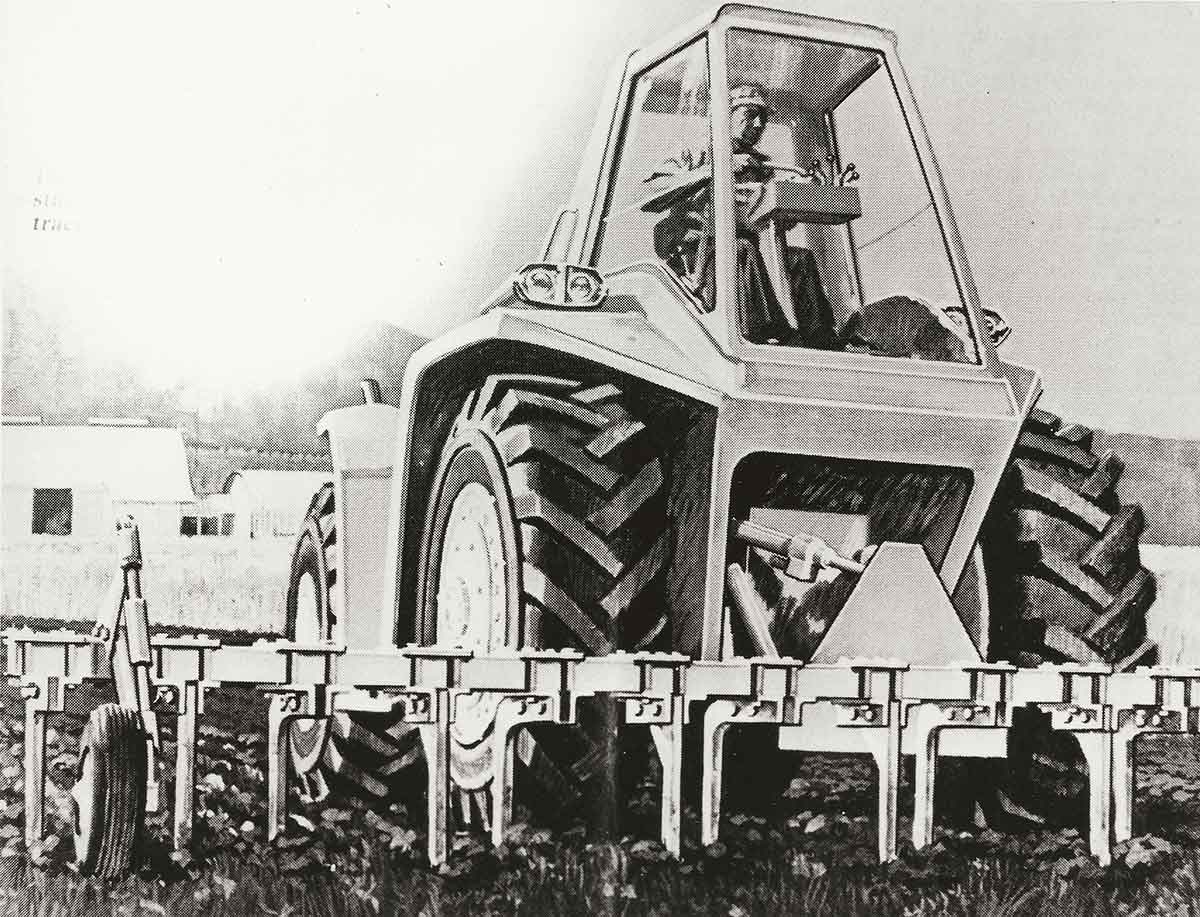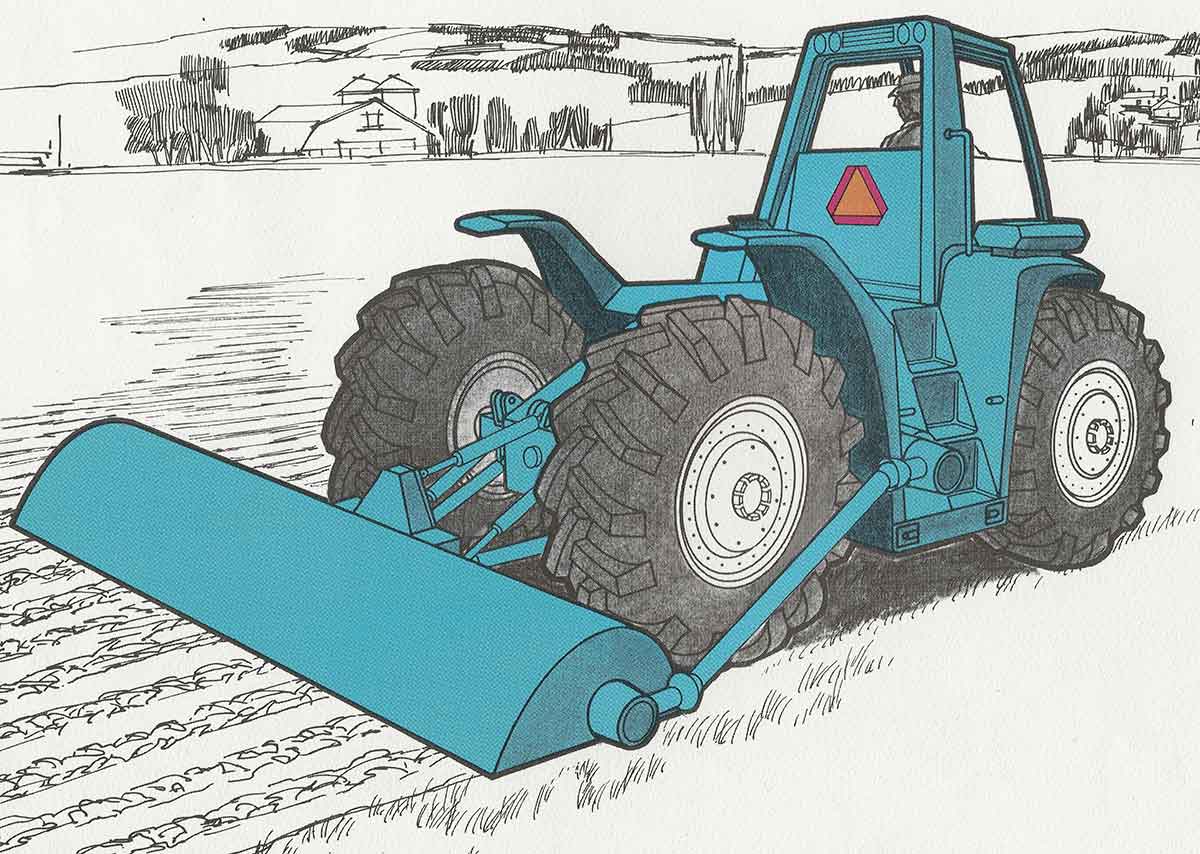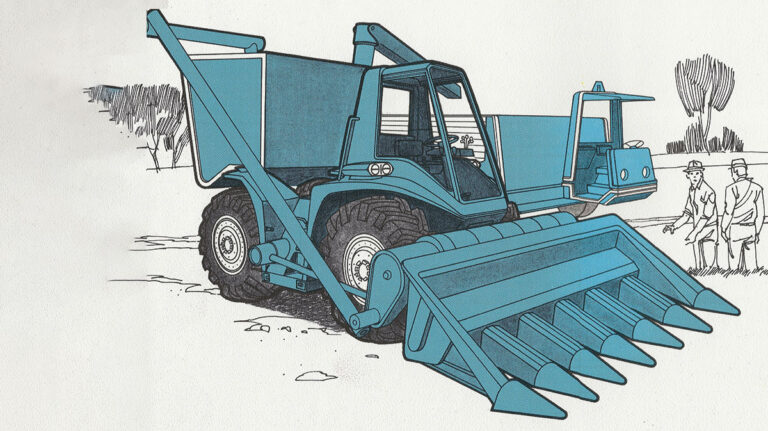Attempts to forecast the future development of farm tractors can attract plenty of interest, but the results of the past predictions have not always been accurate.
Information about the Vantage project was published in 1971, based on a planning programme financed by the United States Steel (USS) company – one of America’s biggest suppliers of steel used by manufacturers of a huge range of products including tractors and farm machinery.
See also: Whatever happened to… single-cylinder Marshalls?
The aim was to suggest power farming developments that could be arriving during the 1970s, using predictions based on the Vantage tractor.
The ideas for the tractor specification were presented in some detail, and while the tractor could work with standard machinery, the design engineers also suggested about 25 special machines that could be available to make full use of the tractor’s work potential.
Details of the Vantage project machine specifications were not included, but artwork was provided to show how some of them may have looked.

Tractor never built
The Vantage design exercise existed only on paper, as it appears that none of the machines or the tractor were ever built.
Instead, the ideas generated by the Vantage design engineers were supported by a lavishly produced brochure which explained that the aims of the project were “to stir interest, spark the imagination, and motivate the creation of more advanced agricultural equipment designs.”
Power for the Vantage project would be provided by a V8 diesel engine producing 225hp at the PTO, according to the published specification, and by 1970s standards, this placed the tractor firmly in the high-horsepower sector.
The tractor was designed with the engine mid-mounted between the front and rear axles, and the engine was also positioned transversely to help reduce the overall length of the tractor, and locating it low down in the tractor’s main frame would help to bring down the centre of gravity to improve stability.
Transmission
The US Steel design team’s specification included a hydrostatic transmission with four ranges forwards and one in reverse, and the maximum forward speed would be about 20mph.
Four-wheel drive was delivered through equal diameter front and rear wheels, using an in-hub planetary final drive system, and the driver would be able to select from four different steering modes, using front wheels only, rear wheels only or four-wheel steering that would include both standard and ‘crab’ settings for full versatility.

Adventurous approach
While some of the Vantage tractor features were a logical extension of big tractor designs at that time, the USS team adopted a more adventurous approach when planning the arrangement of the PTO drives.
The specification they chose included a rear PTO that could be used to operate standard machinery, but there was no PTO at the front of the tractor and instead the specification plans included a second drive point located about half way along the right hand side of the tractor.
Some of the equipment planned specifically for the Vantage tractor was designed for the direct attachment to the side PTO, but its main use appears to have been working with a long extension drive shaft to power machines mounted at either the front or the rear of the tractor.
Both PTOs were dual speed, operating at either 1,000rpm or a variable speed.
The hitch points for mounted equipment were another of the Vantage’s special features. Instead of having one or two implement linkages, Vantage tractors were expected to have three implement attachment hitches, one at the rear, one at the front, plus a detachable linkage to work with the side PTO.
Four attachment points
Another special feature of the linkages was using four attachment points instead of the usual three, although a standard three-point linkage was an option for the rear of the tractor to allow customers to continue using some of their existing conventionally powered machines.
Tractors with a front-mounted cab were still a rarity in the early 1970s, arriving in small numbers from pioneers such as County, with its Forward Control models, and on the Intrac from Deutz, and this was the layout adopted for the Vantage project.
The principal attraction was excellent all round visibility, helped by having a large window area and a relatively high seat position.
Driver comfort had not become a major issue in the tractor market when Vantage was at the design stage, but the specification proposal included air conditioning and heating.
An unusual feature of the cab design was the lack of side doors for entry and exit. This was probably because the cab was immediately over the large diameter front wheels, making access difficult at that point.
Instead, built-in access steps were provided about half way along both sides of the tractor to allow entry through the doors at the back of the cab.
This arrangement may have been safe and convenient, as the Vantage publicity explained, but using the area behind the cab and above the engine compartment as an access route meant less space was available for load carrying, as it was with the front cab positions on County and Deutz tractors.
Although some of the Vantage ideas may have had little apparent influence on future tractor design, the project attracted international interest in the future development of power farming.


